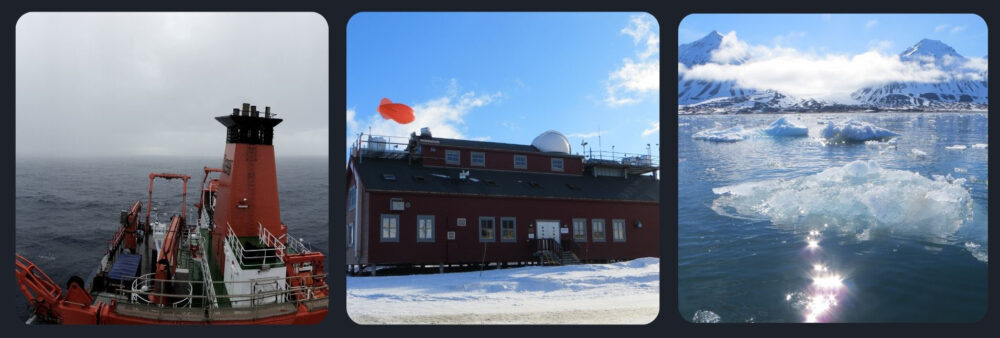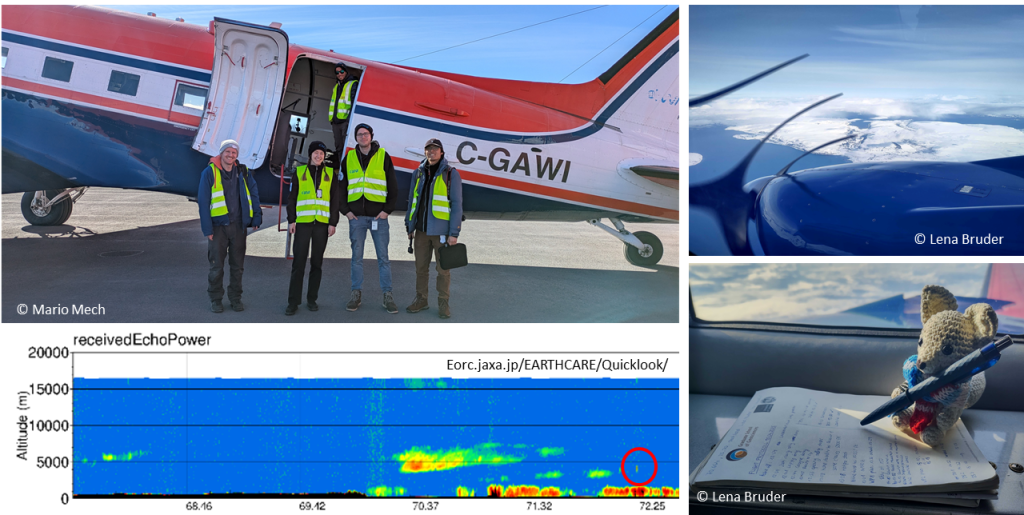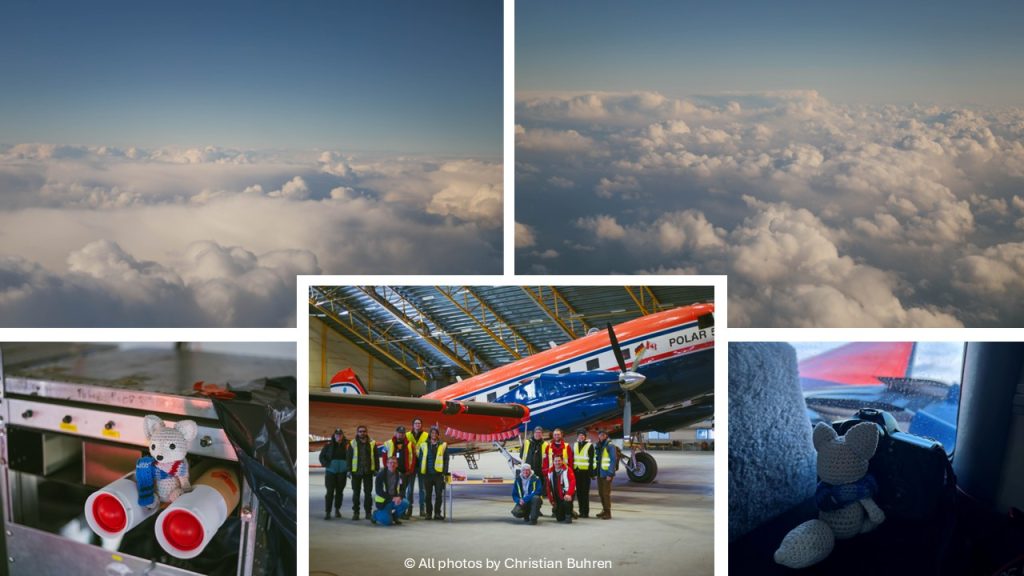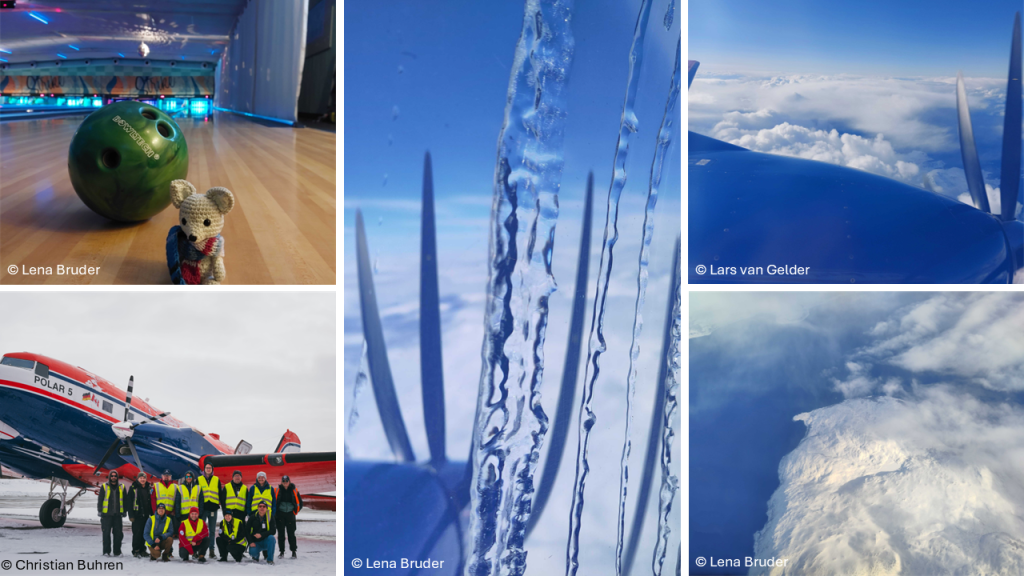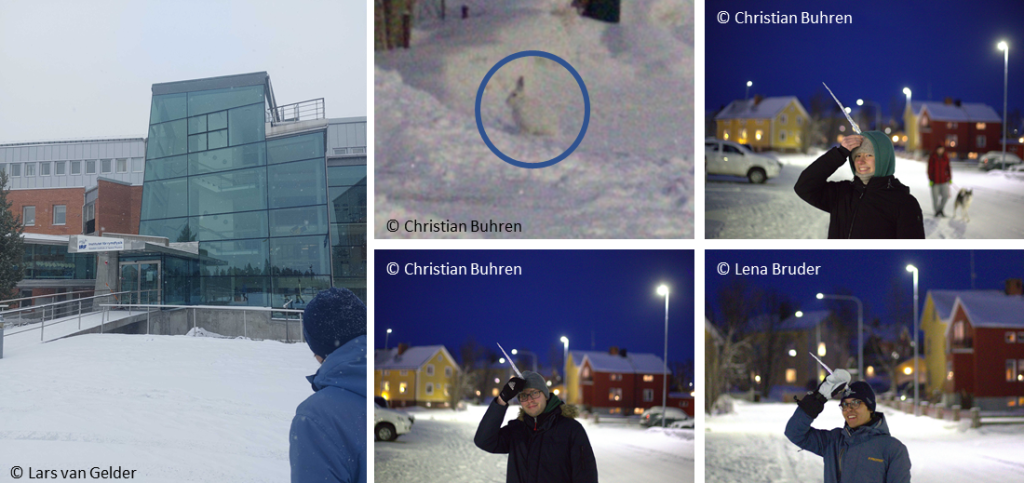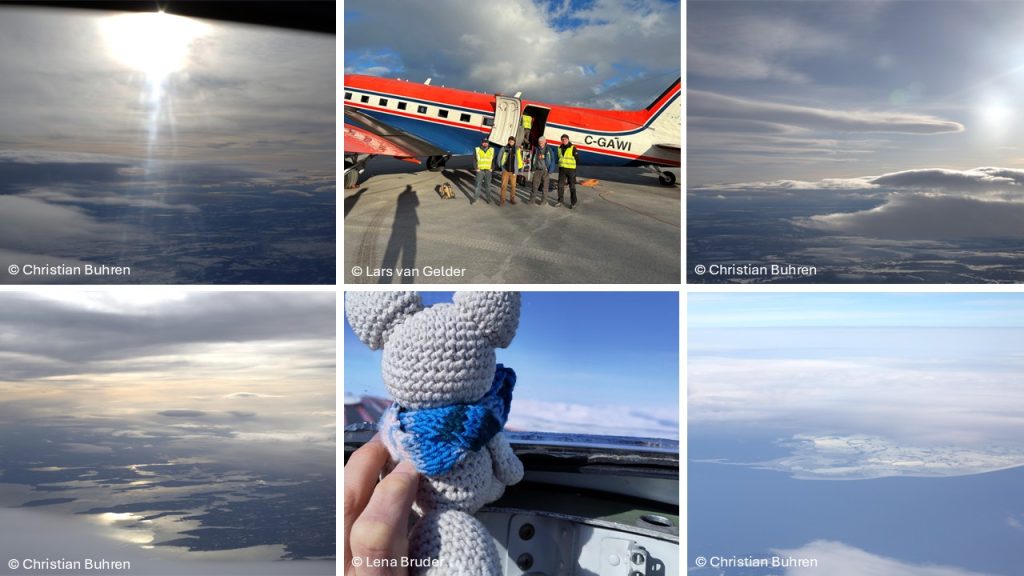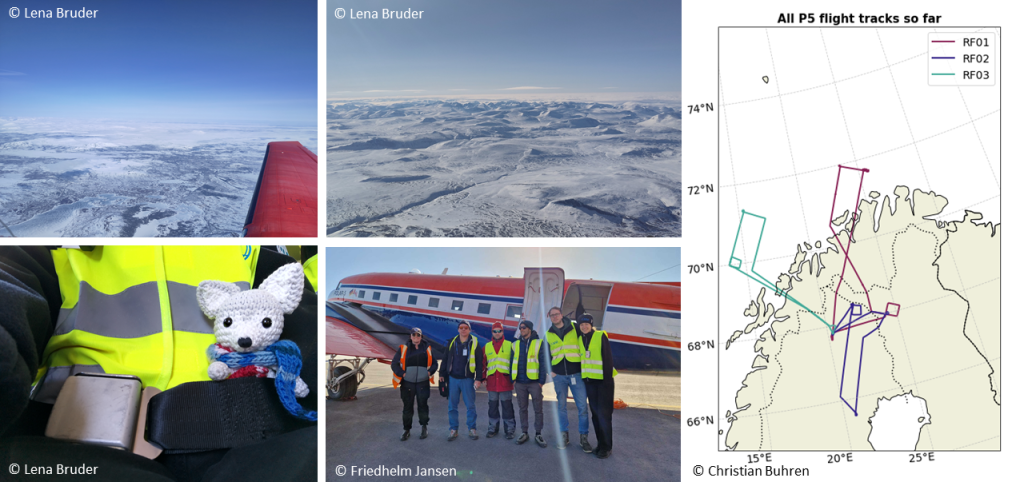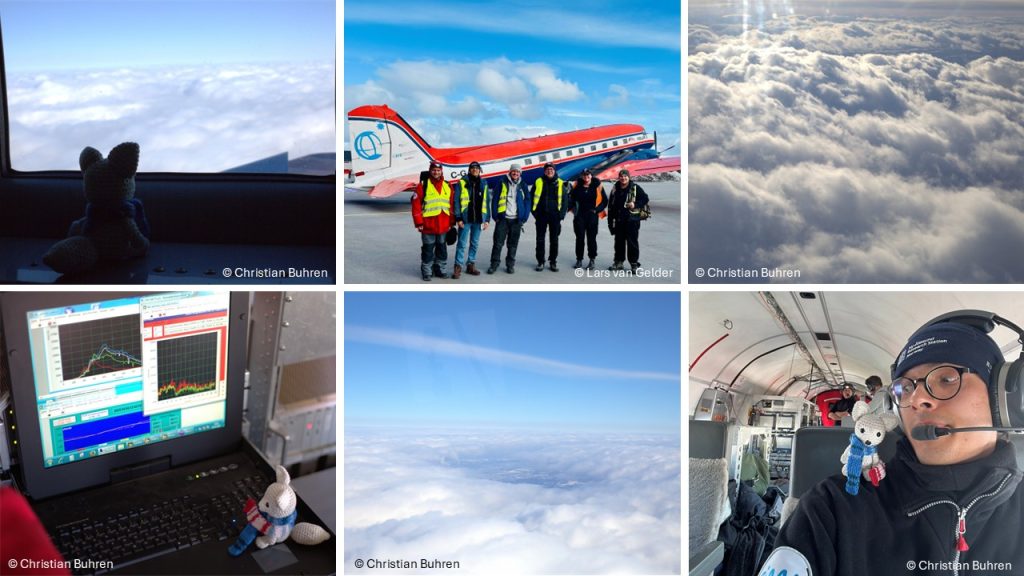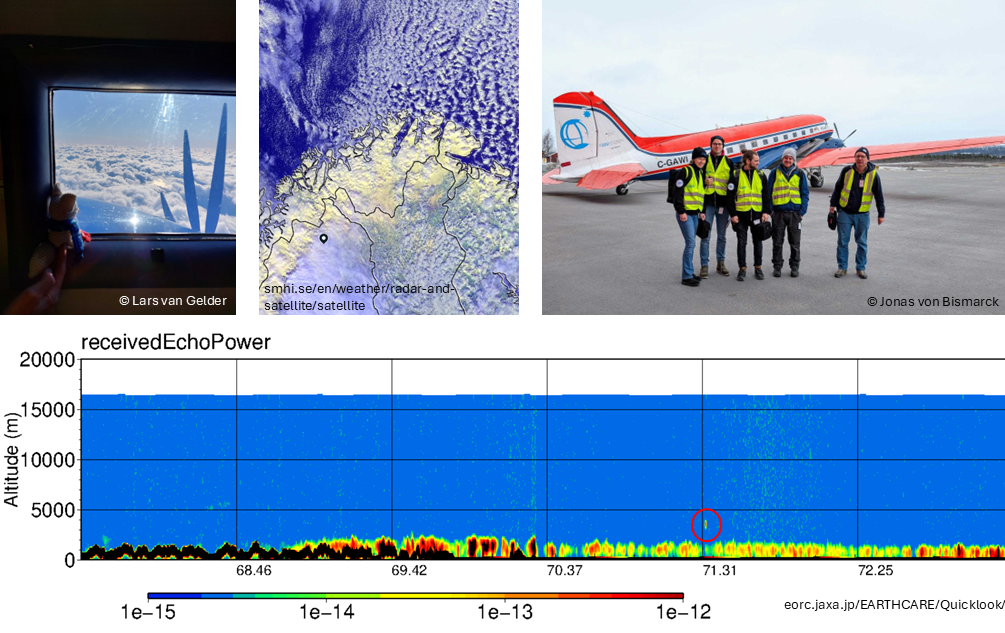COMPEX-EC in the field is over, and it was a full success. Two weeks in Kiruna with the beautiful Polar 5 research aircraft, equipped with a pretty cool suite of instruments, and all that run by an amazing crowd, was such a good time. Wow! Wow! Wow!
We had seven research flights focusing on under-flying EarthCARE, summing up to more than 30 flight hours. Weather conditions were flyable almost all the time. We could investigate a few cold air outbreaks in the mature state, which was fascinating to see from above and in the instruments. Pretty sure the data collected will serve well for the validation study in the upcoming months. Look out for results on well-known conferences and workshops.
And with that, I’d like to say goodbye and thank you very much for following us.
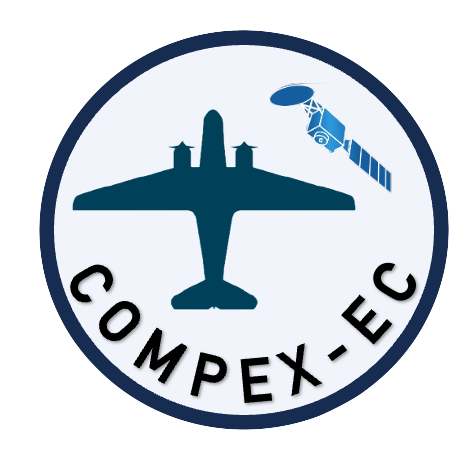
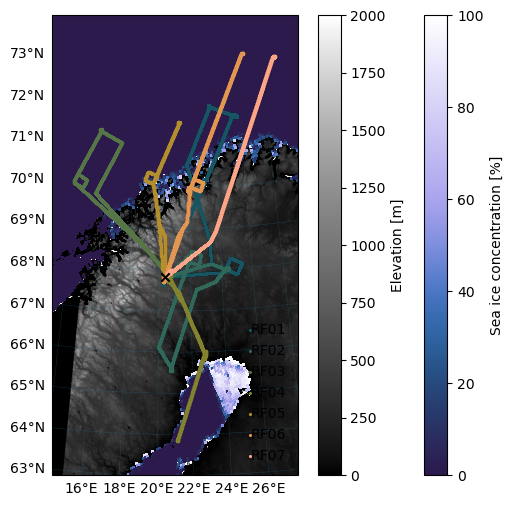
The well-designed COMPEX-EC logo (credits to Friedhelm Jansen (MPI Hamburg)) and all 7 research flights of COMPEX-EC over a digital terrain model and the mean sea ice conditions during the campaign (University of Bremen).
